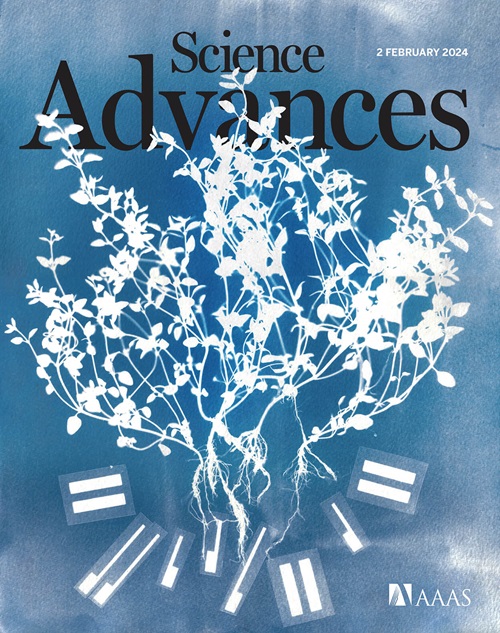Why are soft collagenous tissues so tough?
IF 12.5
1区 综合性期刊
Q1 MULTIDISCIPLINARY SCIENCES
引用次数: 0
Abstract
Bovine pericardium is the tissue of choice for replacing heart valves of human patients in minimally invasive surgery. The tissue has an extraordinarily high toughness of ~100 kilojoules per square meter. Here, we investigate the origin of the toughness through mechanical tests and microscopic observations. In the tissue, crimped, long, strong collagen fibers are embedded in a soft matrix. As a crack grows in the matrix, the fibers decrimp, reorient, slip, and bridge the crack. These microscopic processes enable the fibers to transmit high tension over a long distance. Using two types of experiments, we measure the bridging traction as a function of crack separation, σ(δ). The peak traction is σ0 ~ 60 megapascals. The maximum separation is δ0 ~ 6 millimeters, two to four orders of magnitude higher than that of hard tissues. Both the high traction and large separation of the bovine pericardium contribute to its high toughness.

为什么软胶原组织如此坚韧?
在微创手术中,牛心包是替代人类患者心脏瓣膜的首选组织。这种组织具有非常高的韧性,每平方米约100千焦耳。在这里,我们通过力学试验和微观观察来研究韧性的来源。在组织中,卷曲的、长而结实的胶原纤维嵌在柔软的基质中。当基体中出现裂纹时,纤维就会收缩、重新定向、滑动并弥合裂纹。这些微观过程使纤维能够长距离传输高张力。通过两种类型的实验,我们测量了桥接牵引力作为裂纹分离的函数σ(δ)。峰值牵引力为σ0 ~ 60兆帕斯卡。最大分离δ0 ~ 6 mm,比硬组织高2 ~ 4个数量级。牛心包的高牵引力和大间距使其具有高韧性。
本文章由计算机程序翻译,如有差异,请以英文原文为准。
求助全文
约1分钟内获得全文
求助全文
来源期刊

Science Advances
综合性期刊-综合性期刊
CiteScore
21.40
自引率
1.50%
发文量
1937
审稿时长
29 weeks
期刊介绍:
Science Advances, an open-access journal by AAAS, publishes impactful research in diverse scientific areas. It aims for fair, fast, and expert peer review, providing freely accessible research to readers. Led by distinguished scientists, the journal supports AAAS's mission by extending Science magazine's capacity to identify and promote significant advances. Evolving digital publishing technologies play a crucial role in advancing AAAS's global mission for science communication and benefitting humankind.
 求助内容:
求助内容: 应助结果提醒方式:
应助结果提醒方式:


